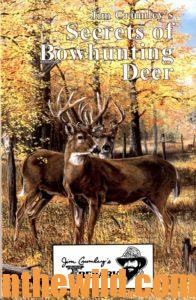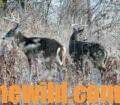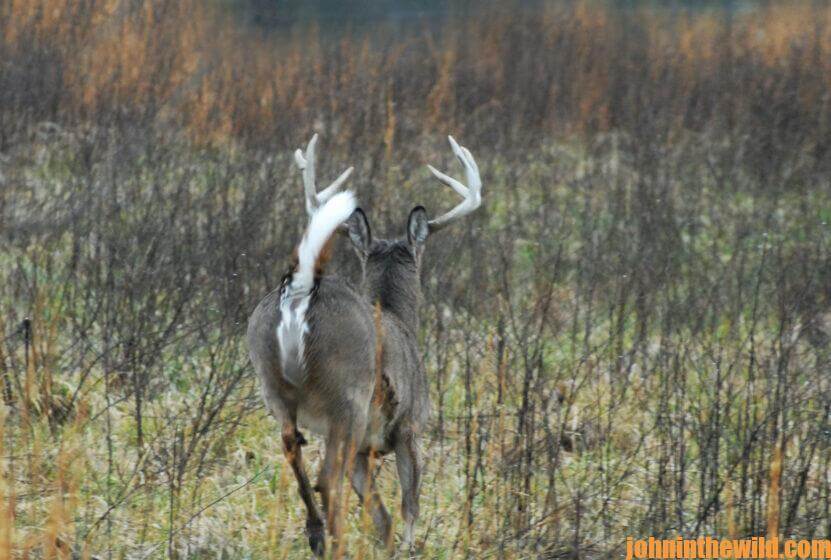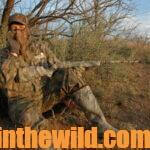Editor’s Note: I started deer hunting years before compound bows, tree stands, safety harnesses, GPS and the other advantages for deer hunting we have today were available. I’m a strong advocate of safe tree stands, full body harnesses and safety devices and equipment to make deer hunting safe and prevent tree stand falls. But in years past, I’ve made some not-so-bright decisions while hunting deer. I’ve spooked deer before and even have fallen out of a tree stand three times in the same day. I’ve shot 24 arrows in one afternoon at deer less than 30 yards from me and failed to cut a hair on them. I’ve fallen asleep in a tree stand. I’ve even dropped bows and other pieces of equipment from my tree stand. I’ve probably committed every sin a deer hunter possibly can commit when hunting from an elevated platform. This week I’ll share the truth with you about some of the dumbest things I’ve done in a tree stand over the years. You may see yourself mirrored in some of my misfortunes. Hopefully you can learn from my mistakes.
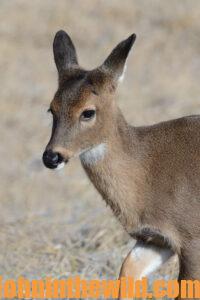 Years ago, I located the perfect tree-stand site where a deep deer trail wound around the edge of a white-oak bottom, climbed up and over a man-made dike and disappeared into a thick briar field. I walked all the way around the dike on the edge of the Tombigbee River in southwest Alabama. Created to store the sediment pumped from the bottom of the river, the dike had grown up in green foliage and blackberries before the sediment was pumped in to it. Although I pinpointed several small trails along the dike, the trail I decided to take a stand on looked like a deer highway. Evidently the deer bedded in the nearby blackberries and fed in the oaks. I set-up my tree stand about 25-yards from the trail that the deer probably would use on the first afternoon of bow season.
Years ago, I located the perfect tree-stand site where a deep deer trail wound around the edge of a white-oak bottom, climbed up and over a man-made dike and disappeared into a thick briar field. I walked all the way around the dike on the edge of the Tombigbee River in southwest Alabama. Created to store the sediment pumped from the bottom of the river, the dike had grown up in green foliage and blackberries before the sediment was pumped in to it. Although I pinpointed several small trails along the dike, the trail I decided to take a stand on looked like a deer highway. Evidently the deer bedded in the nearby blackberries and fed in the oaks. I set-up my tree stand about 25-yards from the trail that the deer probably would use on the first afternoon of bow season.
At this time, pin sights just had entered the outdoor market. Because of their expense, I chose instead to rubber band a finishing nail with white-enamel paint on the end of it to my bow to act as a pin sight. The rubber band supposedly would hold the finishing nail in place. After some practice in my back yard, I almost could drive tacks using that finishing nail as a sight.
Only one company at this time made tree stands, and no one made seat climbers or hand climbers. You simply hugged a tree, pulled the stand up with your feet, locked it in place and continued this pattern until you reached the desired height. When I went to get into my tree stand, I put my bow across my back like the Native Americans once did. After climbing 20 feet off the ground, I locked my stand in place and unwrapped the duct tape that I’d attached to my bow quiver to allow me to carry 12 arrows instead of just six. I didn’t know how many arrows I’d need while bowhunting. I just assumed that if most hunters carried six arrows, then I’d get ahead of the game by taking 12 with me.
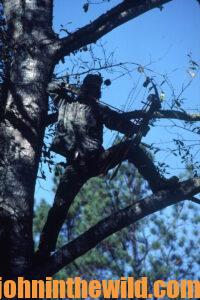 No one ever had bowhunted the deer on this particular hunting lease. So, I planned on surprising the animals. Around 2:00 pm, a fat 6-point buck walked down the trail. I drew my bow and sighted in on him, using my finishing nail like I’d practiced in the backyard. I had a clean release, but the arrow flew about 2-feet over the deer’s back. I couldn’t understand how I’d missed. The deer didn’t seem too disturbed by the arrow. He took about four steps up the trail closer to me, stopped and looked around. As I reloaded another arrow, I looked at my pin sight and noticed that apparently when I’d had the bow across my back and climbed up the tree, the rubber band had moved down on the arm of my bow. “No problem,” I told myself. “I’ll just roll the rubber band up a little bit, and then I can take this deer.”
No one ever had bowhunted the deer on this particular hunting lease. So, I planned on surprising the animals. Around 2:00 pm, a fat 6-point buck walked down the trail. I drew my bow and sighted in on him, using my finishing nail like I’d practiced in the backyard. I had a clean release, but the arrow flew about 2-feet over the deer’s back. I couldn’t understand how I’d missed. The deer didn’t seem too disturbed by the arrow. He took about four steps up the trail closer to me, stopped and looked around. As I reloaded another arrow, I looked at my pin sight and noticed that apparently when I’d had the bow across my back and climbed up the tree, the rubber band had moved down on the arm of my bow. “No problem,” I told myself. “I’ll just roll the rubber band up a little bit, and then I can take this deer.”
I drew and fired again. My arrow hit about 2 feet in front of the buck. Since the buck never had seen an arrow before, he walked over to investigate it. I readjusted my pin sight, drew and fired once more. However, this time in making my adjustment, my finishing nail had moved in slightly, and I shot 2 feet behind the buck. By that time the buck had recognized the danger and left quickly.
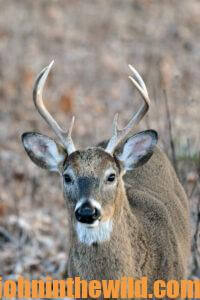 That afternoon I learned two very-important lessons hunting deer. I’d done a good job scouting because deer came down that trail all afternoon, walking from the hardwoods into the briar field. But I also soon learned that manufactured pin sights worked far better than homemade sights.
That afternoon I learned two very-important lessons hunting deer. I’d done a good job scouting because deer came down that trail all afternoon, walking from the hardwoods into the briar field. But I also soon learned that manufactured pin sights worked far better than homemade sights.
After I’d shot out my first dozen arrows and never cut a hair on a deer, I climbed down the tree, gathered up all my arrows, climbed up the tree and shot out of arrows again. Each time I missed a deer, I’d adjust the finishing nail. But I never seemed to get the finishing nail to shoot as accurately in the tree stand as it had shot in my backyard. When I decided to leave the woods, some daylight remained, and deer continued to come down the trail. Once I finally did pay the price and bought one of those expensive pin sights, I bagged two bucks and five does from that trail before the deer decided they could find a better way to travel to their bedding area.
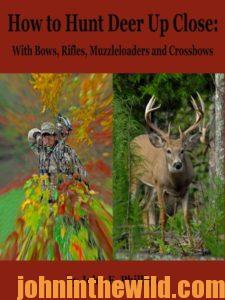 To learn more about hunting deer, check out John E. Phillips’ book, available in Kindle, print and Audible versions, “How to Hunt Deer Up Close: With Bows, Rifles, Muzzleloaders and Crossbows” (http://amzn.to/11dJRu8). You may have to copy and paste this link into your browser. (When you click on this book, notice on the left where Amazon says you can read 10% of the book for free, and you can listen to 10% for free). On the right side of the page and below the offer for a free Audible trial, you can click on Buy the Audible book. To see more of John’s deer-hunting books, visit www.amazon.com/author/johnephillips. John’s latest book, “Elk: Keys to 23 More Hunters’ Success,” was just published in Audible on November 15, 2021, and is available in Kindle, print and Audible at https://www.amazon.com/gp/product/B09B2H9V6Y/ref=dbs_a_def_rwt_hsch_vapi_taft_p1_i10. You can find John’s book, “Jim Crumley’s Secrets of Bowhunting Deer,” available in Kindle and print and soon to be available in Audible at https://www.amazon.com/gp/product/B008N230PE/ref=dbs_a_def_rwt_bibl_vppi_i0.
To learn more about hunting deer, check out John E. Phillips’ book, available in Kindle, print and Audible versions, “How to Hunt Deer Up Close: With Bows, Rifles, Muzzleloaders and Crossbows” (http://amzn.to/11dJRu8). You may have to copy and paste this link into your browser. (When you click on this book, notice on the left where Amazon says you can read 10% of the book for free, and you can listen to 10% for free). On the right side of the page and below the offer for a free Audible trial, you can click on Buy the Audible book. To see more of John’s deer-hunting books, visit www.amazon.com/author/johnephillips. John’s latest book, “Elk: Keys to 23 More Hunters’ Success,” was just published in Audible on November 15, 2021, and is available in Kindle, print and Audible at https://www.amazon.com/gp/product/B09B2H9V6Y/ref=dbs_a_def_rwt_hsch_vapi_taft_p1_i10. You can find John’s book, “Jim Crumley’s Secrets of Bowhunting Deer,” available in Kindle and print and soon to be available in Audible at https://www.amazon.com/gp/product/B008N230PE/ref=dbs_a_def_rwt_bibl_vppi_i0.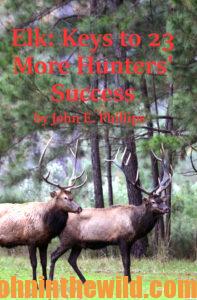
Tomorrow: Not Locking a Deer Tree Stand